Explore web search results related to this domain and discover relevant information.
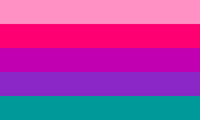
Bi-Lesbian is an individual who uses both bi and lesbian labels.[1] It is under the M-Spec Lesbian umbrella. This term can be used by women and non-binary individuals who use the split attraction model and are bisexual/biromantic/etc. and homo- (lesbian) or an individual who experiences lesbian ...
Bi-Lesbian is an individual who uses both bi and lesbian labels.[1] It is under the M-Spec Lesbian umbrella. This term can be used by women and non-binary individuals who use the split attraction model and are bisexual/biromantic/etc. and homo- (lesbian) or an individual who experiences lesbian tertiary attraction.This term can be used by women and non-binary individuals who use the split attraction model and are bisexual/biromantic/etc. and homo- (lesbian) or an individual who experiences lesbian tertiary attraction. They have one form of attraction to two or more genders but are only attracted to women via another form of attraction.They may find themselves sexually attracted to men, but could never picture themselves in a relationship with one, putting more emphasis on their attraction to women, though this varies from an individual to an individual.It can also be used by individuals who identify as both bisexual and lesbian, either due to changing attraction (such as abrosexuality), or due being part of a plural system, such as having a different sexuality when fronting, or being in a median system where one member somewhat experiences their headmate(s)' attraction(s) due to emotional bleedover.

In 2013, both the US and UK governments engaged with the B as never before: the UK having its first Ministerial message of support for Bi Visibility Day and on the same day in the US a White House reception for activists to talk about bi health inequalities. LGBT organisations with poor records ...
In 2013, both the US and UK governments engaged with the B as never before: the UK having its first Ministerial message of support for Bi Visibility Day and on the same day in the US a White House reception for activists to talk about bi health inequalities. LGBT organisations with poor records on “B” inclusion used the date as a focus for taking their first steps in redressing that.September is here and some people are calling it Bi Visibility Month. In 1999, International Celebrate Bisexuality Day was inaugurated on September 23. Now more widely known as Bi Visibility Day (especially in Europe and the UK; in the US the original name lingers more) this has been marked every year since.Two years later in 2001 the website now known as BiVisibilityDay.com was established to list events marking the date – at first in the UK only but later expanding to cover other countries and act as a sustained record of how the event had been marked over the years around the world.There might be no specific bi projects currently running in your local area or within your larger company organisation, but you want to show a welcoming face to bi staff and service users, or inspire a bi project to get off the ground.

Bisexual people reportedly make up the largest group—50 percent—of the LGBTQ+ community, but we remain the ‘invisible majority.’ How can we change that?
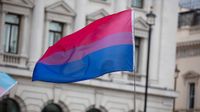
Nearly three-fifths of LGBTQ adults in America identify as bisexual, according to a new Gallup poll, a finding that illustrates the extent of a population that some researchers have termed the “invisible majority” of the queer community.
Nearly three-fifths of LGBTQ adults in America identify as bisexual, according to a new Gallup poll, a finding that illustrates the extent of a population that some researchers have termed the “invisible majority” of the queer community. Young Americans, and young women in particular, have widely rejected the notion of sexuality as a binary choice…Young Americans, and young women in particular, have widely rejected the notion of sexuality as a binary choice — straight versus gay — just as they have largely abandoned the either-or, boy-girl system of fixed gender. · One-fifth of Generation Z respondents identified as queer, Gallup found, one of the largest generational LGBTQ populations ever documented.Researchers increasingly recognize bisexuality as the largest LGBTQ population. A pioneering 2011 study by the Williams Institute, a UCLA thinktank, examined several earlier surveys and found that bisexuals constituted a narrow majority.A 2011 report from the San Francisco Human Rights Commission termed bisexuals the “invisible majority” of the queer community, calling out a societal tendency to act as if the largest LGBTQ group didn’t exist.
Ancient Greece is generally considered to have been accepting of LGBTQIA+ individuals, though attitudes differed in various city-states.[14] In terms of social acceptance in ancient Rome, a freeborn Roman man could have sex with both men and women, as long as he took the penetrative role.[15] ...
Ancient Greece is generally considered to have been accepting of LGBTQIA+ individuals, though attitudes differed in various city-states.[14] In terms of social acceptance in ancient Rome, a freeborn Roman man could have sex with both men and women, as long as he took the penetrative role.[15] The Roman emperor Caligula had relationships with both men and women.[16][17]Still, they "perceived male targets (who expressed a one-time interest in the other sex) to be more homosexual than comparable female targets were judged to be".[43] Another study, published in 2021, mentioned that the authors researched the suggestion that "people stereotype bisexual women as truly heterosexual and bisexual men as truly gay" and found that "participants all perceived bisexual men as more attracted to men than to women. No such pattern emerged for bisexual women".[44] According to GLAAD's report Where We Are on TV 16'-17':[45] Of the 278 regular and recurring LGBTQ characters on scripted broadcast, cable, and streaming programming, 83 (30 percent) are counted as bisexual.In New York, Philadelphia, and Washington, D.C. between 1965 and 1969 multiple pickets were staged to fight for LGBTQIA+ rights.One woman at the second White House picket declared herself as bisexual.[26] Many bisexual individuals took part in the Stonewall riots in 1969, a key historical event for the entire LGBTQIA+ community.

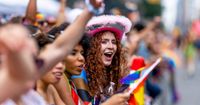
IE 11 is not supported. For an optimal experience visit our site on another browser. ... About half of the Gen Z adults who identify as LGBTQ identify as bisexual, according to the Public Religion Research Institute report.
Twenty-eight percent of Gen Z adults — which the survey’s researchers specify as those ages 18 to 25 — identify as LGBTQ, according to a report released this week by the Public Religion Research Institute, or PRRI.That compares with 10% of all adults, 16% of millennials, 7% of Generation X, 4% of baby boomers and 4% of the Silent Generation, the institute found. “With respect to LGBTQ identity, it’s very clear that Gen Z adults look different than older Americans,” said Melissa Deckman, PRRI’s chief executive.The ACLU projects that more than 320 bills were prefiled for or introduced during this year’s state legislative sessions. “Whether it’s at the polls, in marches and rallies, or online, LGBTQ+ visibility matters and Gen Z is a force for change,” Kelley Robinson, the president of the Human Rights Campaign, the country’s largest LGBTQ advocacy group, said in a statement.More than 1 in 4 Gen Z adults in the U.S. identify as lesbian, gay, bisexual, transgender or queer, dwarfing the percentages of LGBTQ Americans in older age groups, a new survey has found.
A safe space for GSRM (Gender, Sexual, and Romantic Minority) folk to discuss their lives, issues, interests, and passions. LGBT is still a popular term used to discuss gender and sexual minorities, but all GSRM are welcome beyond lesbian, gay, bisexual, and transgender people who consent to ...
A safe space for GSRM (Gender, Sexual, and Romantic Minority) folk to discuss their lives, issues, interests, and passions. LGBT is still a popular term used to discuss gender and sexual minorities, but all GSRM are welcome beyond lesbian, gay, bisexual, and transgender people who consent to participate in a safe space.Bisexuals belong in queer spaces. There is no debate or question about this - bisexual people are an integral part of the LGBTQ+ community and deserve to be welcomed, celebrated, and uplifted in all queer spaces.Queer spaces should be inclusive of all sexual orientations under the LGBTQ+ umbrella, including bisexuality. Bisexual people deserve to feel safe, seen, and celebrated alongside their gay, lesbian, transgender, and non-binary peers.Got on Instagram for the first time in like a week (give or take a couple days) today and oh boy... I follow a lot of LGBTQ places and the comments were more unhinged than normal l, specifically saying how bisexuals aren't actually allowed when they're in a straight-passing relationship.


What may surprise most of the people whom I come out to is that the most difficult criticism I face for identifying as bisexual comes from the LGBT community itself.
Although we celebrate our LGBT identities on this day, many people outside the LGBT community may not realize that, in reality, we are in a constant process of coming out to co-workers, friends, family members, acquaintances, neighbors, employers, teachers, and anyone else involved in our lives. I have been coming out as bisexual since age 15, and like all members of the LGBT community, I will continue to do so for the rest of my life.If this sounds like a tiring process, believe me, it is. Despite the critiques that LGBT people shouldn't "shove it in people's faces," wearing a rainbow pin or pride shirt may be the easiest way to visually come out without telling strangers our personal coming-out stories.While I am now out and proud as bisexual, I was not always as confident about who I am. At age 15, when I admitted to myself that I am attracted to women, I felt ashamed. Like many LGBT youth, I wanted to be "normal" and just like other kids my age.It was the 1990s, when being gay and lesbian was still regarded as a "lifestyle choice" and there was even less knowledge or sympathy toward bisexuality. What saved me from self-hatred for being bi was reading books and articles about being LGBT, which explained that sexuality could fall anywhere along a spectrum, and that you didn't need to choose between being gay and being straight.
The term bisexuality is mainly used for people who experience both heterosexual and homosexual attraction. Bisexuality is one of the three main classifications of sexual orientation along with heterosexuality and homosexuality, all of which exist on the heterosexual–homosexual continuum.
Bisexual people also often hide their actual orientation due to societal pressures, a phenomenon colloquially called "being closeted". In the U.S., a 2013 Pew survey showed that 28% of bisexuals said that "all or most of the important people in their life are aware that they are LGBT" compared to 77% of gay men and 71% of lesbians.Furthermore, when broken down by gender, only 12% of bisexual men said that they were "out" vs. 33% of bisexual women. Like people of other LGBTQ sexualities, bisexuals often face discrimination.The bisexual community (also known as the bisexual/pansexual, bi/pan/fluid, or non-monosexual community) includes members of the LGBTQ community who identify as bisexual, pansexual or fluid.There is increasing inclusion and visibility of bisexuals, particularly in the LGBTQ community.The term bisexuality is mainly used for people who experience both heterosexual and homosexual attraction. Bisexuality is one of the three main classifications of sexual orientation along with heterosexuality and homosexuality, all of which exist on the heterosexual–homosexual continuum.

According to the Williams Institute and the HRC Foundation's own research, studies suggest that about 50 percent of people who identify as either gay, lesbian or bisexual, identify as bisexual. This makes the bisexual population the single largest group within the LGBTQ+ community.
These include the Bisexual Resource Center, the Bisexual Organizing Project, and Still Bisexual. The Human Rights Campaign reports on news, events and resources of the Human Rights Campaign Foundation that are of interest to the general public and further our common mission to support the LGBTQ+ community.Biphobia is prejudice, fear or hatred directed toward bisexual people. It can include making jokes or comments based on myths and stereotypes that seek to undermine the legitimacy of bisexual identity, like "bisexuality is a phase" or "bi people are greedy." Biphobia occurs both within and outside of the LGBTQ+ community.In addition to biphobia, bisexual people are often excluded or rendered invisible in LGBTQ+ spaces and conversations about LGBTQ+ issues.Find the answers to frequently asked questions on bisexuality.
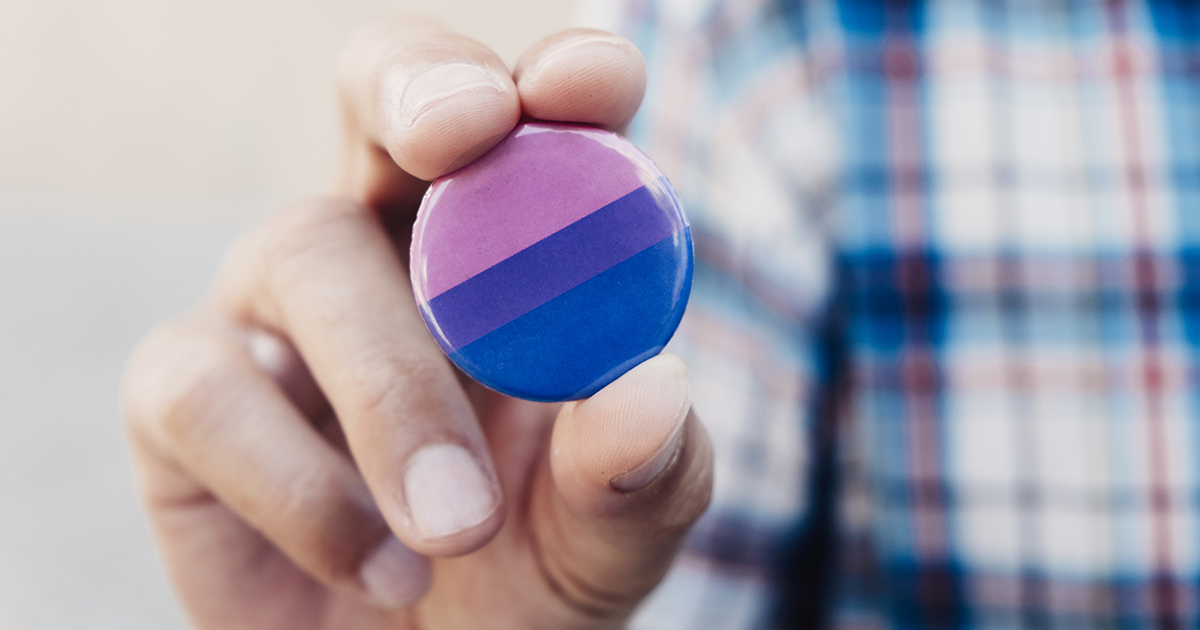
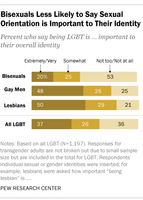
The shares of gay men (48%) and lesbians (50%) who say the same about their sexual orientations are much higher. (Due to the small number of transgender adults in the survey, it’s not possible to break out their responses. However, they are included in the total LGBT shares reported here.)
When we asked about six specific types of incidents – ranging from being subjected to slurs and jokes (the most common experience among all LGBT respondents) to being treated unfairly by an employer (the least common), bisexuals were significantly less likely than gay men or lesbians to have experienced most of them.There’s also a sense among all LGBT adults that society is more accepting of bisexual women than it is of gay men, lesbians or bisexual men. A third of LGBT adults say there is a lot of acceptance for bisexual women. Fewer (25%) say there’s a lot of acceptance for lesbian women, and fewer still see a lot of acceptance for gay men (15%) and bisexual men (8%).One way in which bisexuals are similar to gay men and lesbians is in their own journey to self-awareness about their sexual orientation. The survey asked LGBT respondents at what point in their life they had first thought they might be lesbian, gay, bisexual or transgender; at what age they knew for sure; and at what age they first told someone about their sexual orientation.The median age at which they say they knew for sure that they were bisexual is 17, and they were a median age of 20 when they first told someone about their sexual orientation. It’s difficult to determine the size and composition of the LGBT population, especially using a survey-based approach that relies on the willingness of individuals to disclose their sexual orientation and gender identity.
It’s important to ask what words a person would like to use to describe themselves, rather than assuming or defining for other people. There is no “better” identity term, there is only the best identity term for you. The Trevor Project’s 2019 National Survey on LGBTQ+ Youth Mental Health ...
It’s important to ask what words a person would like to use to describe themselves, rather than assuming or defining for other people. There is no “better” identity term, there is only the best identity term for you. The Trevor Project’s 2019 National Survey on LGBTQ+ Youth Mental Health found that respondents used more than 100 different terms to label their sexuality!People may share different labels for their identities depending on the context or who they are speaking to. For example, a person may define themselves as bisexual to a relative who is unfamiliar with LGBTQ+ identities, but further specify their identity as fluid or pansexual when talking to friends within the queer and trans community.Many asexual people desire romantic relationships, and romantic orientations are a way for aces to communicate who they prefer to date or form relationships with. You may hear some asexual people define their orientation with terms like biromantic or panromantic. LGBTQ+ young people who do not identify as asexual may use romantic orientations to clarify the nuances of their orientation as well.Labels can be a huge source of self-understanding for some LGBTQ+ people. Because we live in a society where everyone is assumed and expected to be straight and cisgender, finding the words to define yourself can be an act of liberation. Labels can help connect people to one another, allowing them to feel less alone and to create community together.

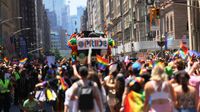
Of the respondents, 85.6% said they were straight, 7.6% identified with one or more identifiers within the LGBTQ+ community, and 6.8% of those surveyed declined to respond, Gallup said. The data found that bisexual adults made up the largest proportion of the LGBTQ+ community, with 4.4% of U.S.
"There are not sufficient cases to provide precise estimates of LGBTQ+ identification among nonbinary Americans for 2023 alone, but combined data from 2022 and 2023 indicate that about 80% of nonbinary adults identify as LGBTQ+, with one-third being bisexual and one-third transgender."adults and 57.3% of LGBTQ+ adults reporting that they are bisexual.In 2023, 7.6% of U.S. adults said they align themselves with the LGBTQ+ community, compared to 3.5% in 2012, the first year Gallup collected such metrics. That figure has grown every year since 2012.Number of U.S. adults who identify as LGBTQ+ has doubled since 2012 In 2023, 7.6% of U.S. adults said they align themselves with the LGBTQ+ community, compared to 3.5% in 2012, the first year Gallup collected such metrics.
But even though 58% of the LGBTQ community is bisexual, they are far less likely to come out to family and friends than their gay and lesbian counterparts and may face discrimination even within the queer community.
LGBTQ is an acronym of identities related to sexual orientation and gender identity. ... In recent years, many have added I and A — intersex and asexual — to the lineup. The plus sign is often tacked onto the end to signal identities in the community that perhaps don’t fit into the other letters like pansexual, polyamorous, Two-Spirited or others who don’t label their sexuality. Learn them all: Breaking down each letter in LGBTQ+Bisexual Resource Center: Community connection, free resources, definitions for bi+ community · PFLAG: 400+ chapters across the country providing confidential peer support, education, and advocacy to LGBTQ+ people, their parents and families, and allies.LGBTQ rights have come a long way in the U.S. But the community still faces threats in the form of legalization, discrimination and even violence.More than half of LGBTQ Americans identify as bisexual, the largest category in the community.

Being bisexual means you can feel attraction toward more than one gender. Despite being one of the largest groups in the LGBTQ community, bi people are often subject to invisibility or erasure. This means that people often ignore or deny that bisexuality exists.
There are many out, proud, and politically active bi people. It’s true, some bi people may hide their sexual identity to avoid stigma and prejudice. This is also true for other members of the LGBTQ community. Feeling pressured to “pass” is not fair.The B in LGBTQ stands for bisexual, but what does that really mean? Let’s talk about what bisexuality is, what it’s not, and what we can do to recognize and celebrate it.Did you know that more than half of the LGBTQ community identifies as bisexual? Learn more about the B in LGBTQ.This blog serves as a guide to learn more about being bi and breakdown common myths.
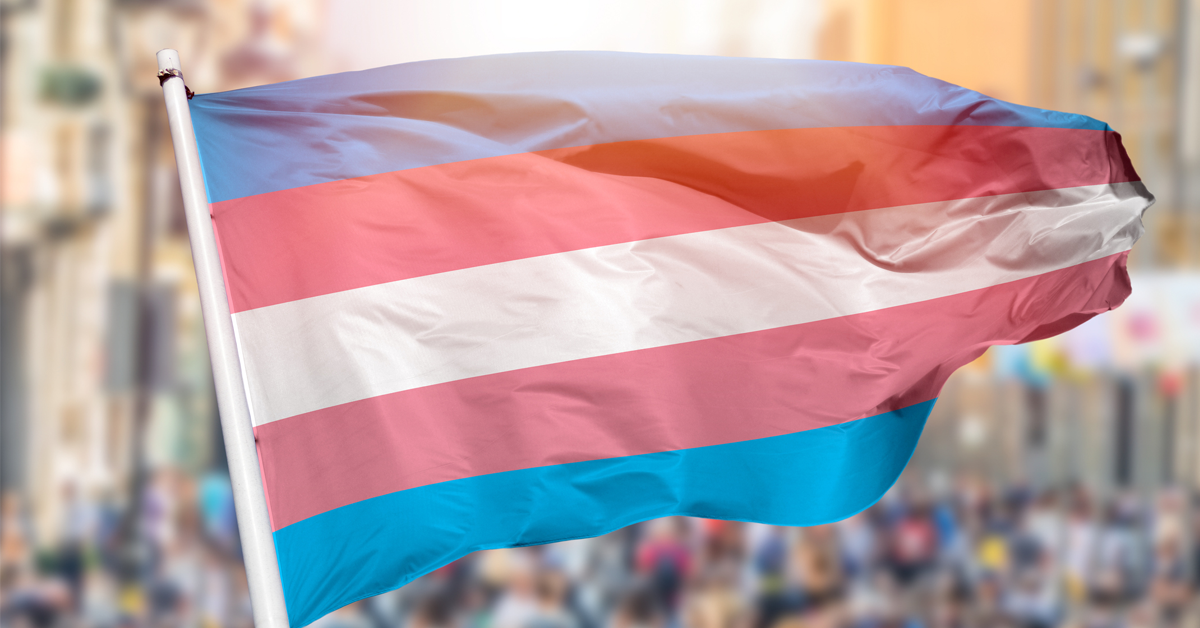
Asking as a queer guy. Sorry if it’s a stupid question or over-asked. I mean I know bi is commonly known as attraction towards men & women, but I’ve…
Not to hate on Bragason, but I'm mad they didn't cast Hunter Schafer as Zelda, she would've been so perfect 😭 ... A safe space for GSRM (Gender, Sexual, and Romantic Minority) folk to discuss their lives, issues, interests, and passions. LGBT is still a popular term used to discuss gender and sexual minorities, but all GSRM are welcome beyond lesbian, gay, bisexual, and transgender people who consent to participate in a safe space.Thank you for your post, if this is a question please check to see if any of the links below answer your question. If none of these links help answer your question and you are not within the LGBT+ community, questioning your identity in any way, or asking in support of either a relative or friend, please ask your question over in r/AskLGBT.Remember that this is a safe space for LGBT+ and questioning individuals, so we want to make sure that this place is dedicated to them. Thank you for understanding. This automod rule is currently a work in progress. If you notice any issues, would like to add to the list of resources, or have any feedback in general, please do so here or by sending us a message.Also, please note that if you are a part of this community, or you're questioning if you might be a part of the LGBTQ+ community, and you are seeing this message, this is not a bad thing, this is only here to help, so please continue to ask questions and participate in the community.

Apple unveils 2025 Pride Collection ‘to celebrate the strength and beauty of LGBTQ+ communities’
LGBTQ+ news, features and opinion from the UK and worldwide. PinkNews leads the way in gay, lesbian, bisexual and transgender news.Róisín Murphy ‘will never be the same again’ two years after backlash to puberty blocker commentsNaomi Watts attends Balenciaga’s Paris Fashion Week show with trans daughter KaiThe best Drag Race lip-syncs of all time, as chosen by Drag Race queens

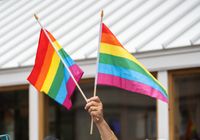
Newsweek AI is in beta. Translations may contain inaccuracies—please refer to the original content. Read original ... The number of American adults who identify as LGBTQ+ has skyrocketed in recent years, but there's one group that's been driving the uptick.
The Gallup survey has tracked LGBTQ+ identification for 12 years, and the rates of adults identifying with the community has nearly tripled in that time. While today's young adults are more likely to identify as lesbian, gay, bisexual and transgender, the most notable increase driving the shift is due to more primarily young women identifying as bisexual.The gender gap was especially apparent among Gen Z, as 31 percent of Gen Z were a part of the LGBTQ+ community versus just 12 percent of Gen Z men. The survey was based on responses from more than 14,000 U.S.Shae Gardner, the director of policy and research at LGBT Tech, told Newsweek: "This rise in LGBTQ+ identification is a direct testament to the power of visibility. No one knows it's okay to be something until they see someone being okay being that thing, and the expansion of digital spaces and online representation has helped fuel a cultural shift that allows more people to see their experiences reflected and find the language to name them.Gardner said the growth in bisexuality primarily among women shows gender norms and stigma are still impacting who feels safe identifying openly. "The more people witness diverse expressions of gender and sexuality, the more they recognize that identity isn't confined to predefined categories," Gardner said. "This rise is happening despite increased political targeting of LGBTQ+ communities—even as attempts to censor or erase queer identities persist, acceptance and community continue to grow.
Using inclusive and accurate language helps create safer, more respectful spaces. It shows that we see and value people for who they are. At a time when LGBTQ+ rights are being challenged globally, getting the language right is one way we can all show up in solidarity.
There’s no single ‘correct’ way to talk about LGBTQ+ identities. Language is constantly evolving, and people may use different terms to describe themselves. Be kind and respectful.Avoid assumptions. Don’t assume someone’s identity based on how they look or sound. Stay open to learning. New terms emerge and definitions change. Keep listening and learning. We’ve put together suggested definitions for key terms relating to LGBTQ+ identities and experiences.Asexual people who experience romantic attraction might also use terms such as gay, bi, lesbian, straight and queer in conjunction with asexual to describe the direction of their romantic attraction. A straight and/or cis person who supports members of the LGBTQ+ community.People may also use terms such as gay, bi, lesbian, straight and queer in conjunction with demi to explain the direction of romantic or sexual attraction as they experience it. ... A term predominantly used to describe feminine lesbians. It is also sometimes used more generally to describe feminine LGBTQ+ people.

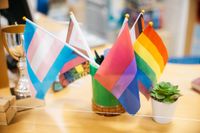
Despite the fact that bisexual people make up the highest percentage of LGBT+ people they are often not as visible in the media or wider society as other parts of the community. This invisibility can lead to bi people experiencing greater levels of stigma, shame, and stereotyping from within ...
Despite the fact that bisexual people make up the highest percentage of LGBT+ people they are often not as visible in the media or wider society as other parts of the community. This invisibility can lead to bi people experiencing greater levels of stigma, shame, and stereotyping from within and outisde the LGBT+ community.Finally, you could use one of your form times during Bisexual Awareness Week to discuss some ways your pupils could better support and show up for bisexual people. Our form time resouces includes a video from one of the hundreds of LGBT+ young people aged 18-25 who volunteer for us talking about supporting bisexual people.By signign up to Just Like Us’ resource library, schools can access LGBT+ inclusive resources tailored to Bisexual Awareness Week, and explore themes like representation, inclusion, and allyship.Celebrate Bisexual Awareness Week 2025 with free, inclusive school resources. Help students learn about bisexuality and promote acceptance in the classroom.







